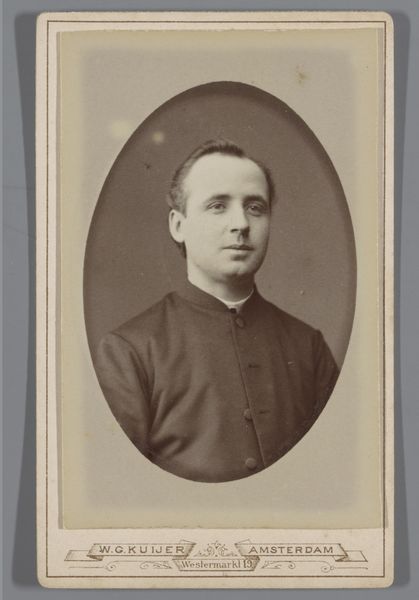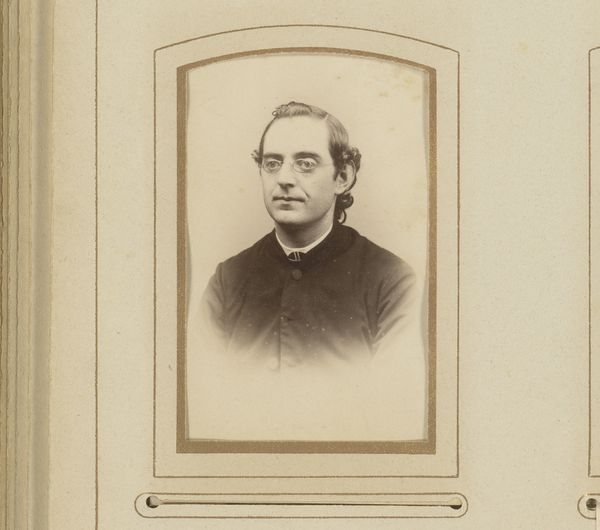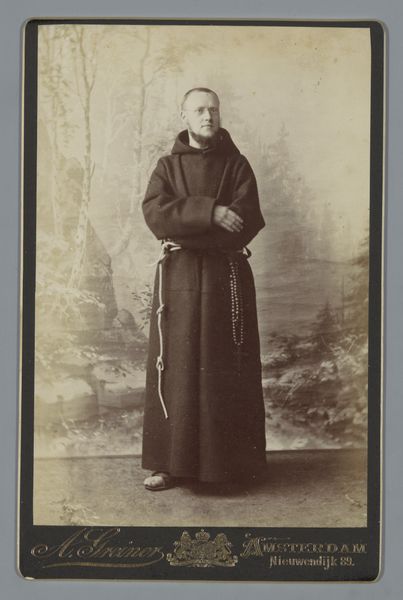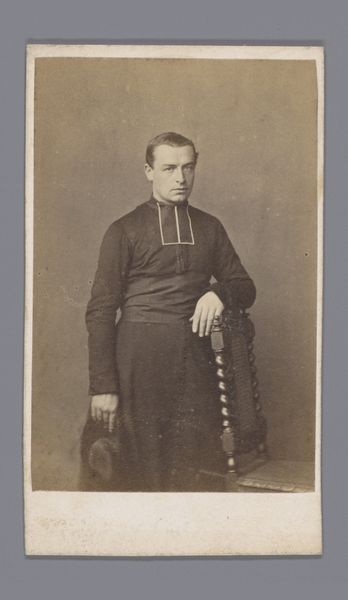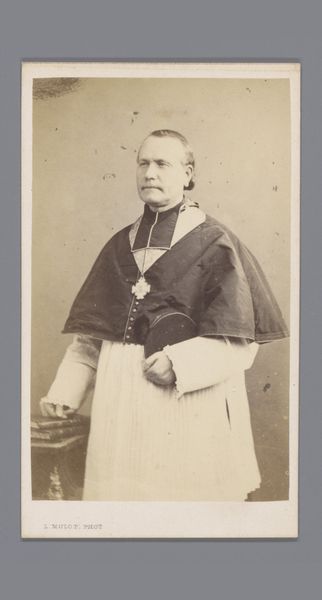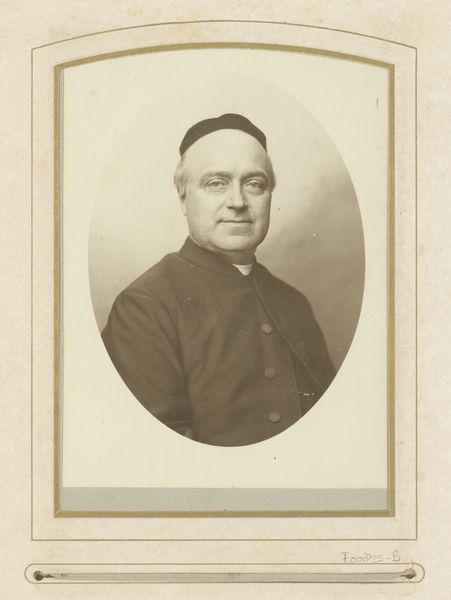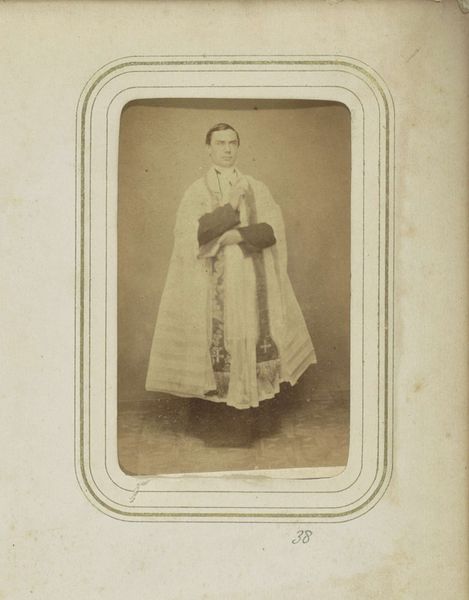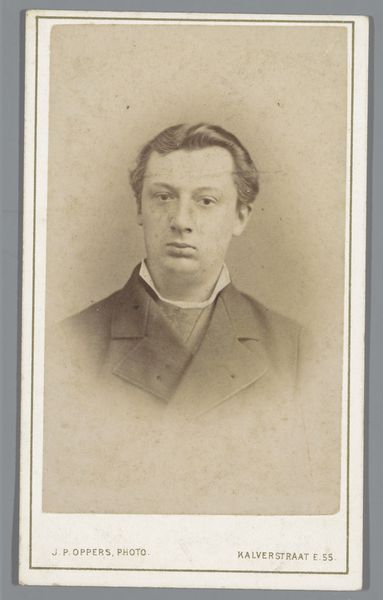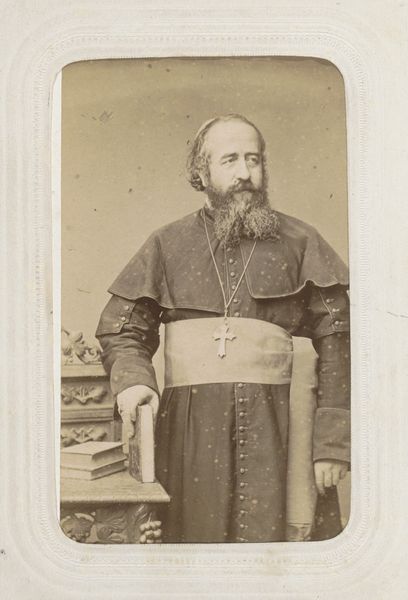
photography
#
portrait
#
photography
#
realism
Dimensions: height 104 mm, width 63 mm
Copyright: Rijks Museum: Open Domain
August Rombaut, a photographer working out of Sint-Niklaas, Belgium, made this carte-de-visite portrait of an unknown cleric sometime in the late 19th century. Cheap, portable, and reproducible, these photographs allowed the rising middle class to participate in the practice of portraiture, a status symbol previously available only to the aristocracy. Although we don't know the identity of this clergyman, the photograph gestures towards the social influence of the Catholic Church in Belgium at the time. After Belgium gained independence in 1830, the Church was granted considerable power in exchange for its support of the new liberal state. Priests became authority figures in local communities and were involved in every aspect of public life from education to politics. To learn more about the relationship between photography, class, and the church, look to archives of newspapers and other publications. These sources can help us to better understand the social and institutional contexts that shaped the production and consumption of photographic portraiture.
Comments
No comments
Be the first to comment and join the conversation on the ultimate creative platform.
